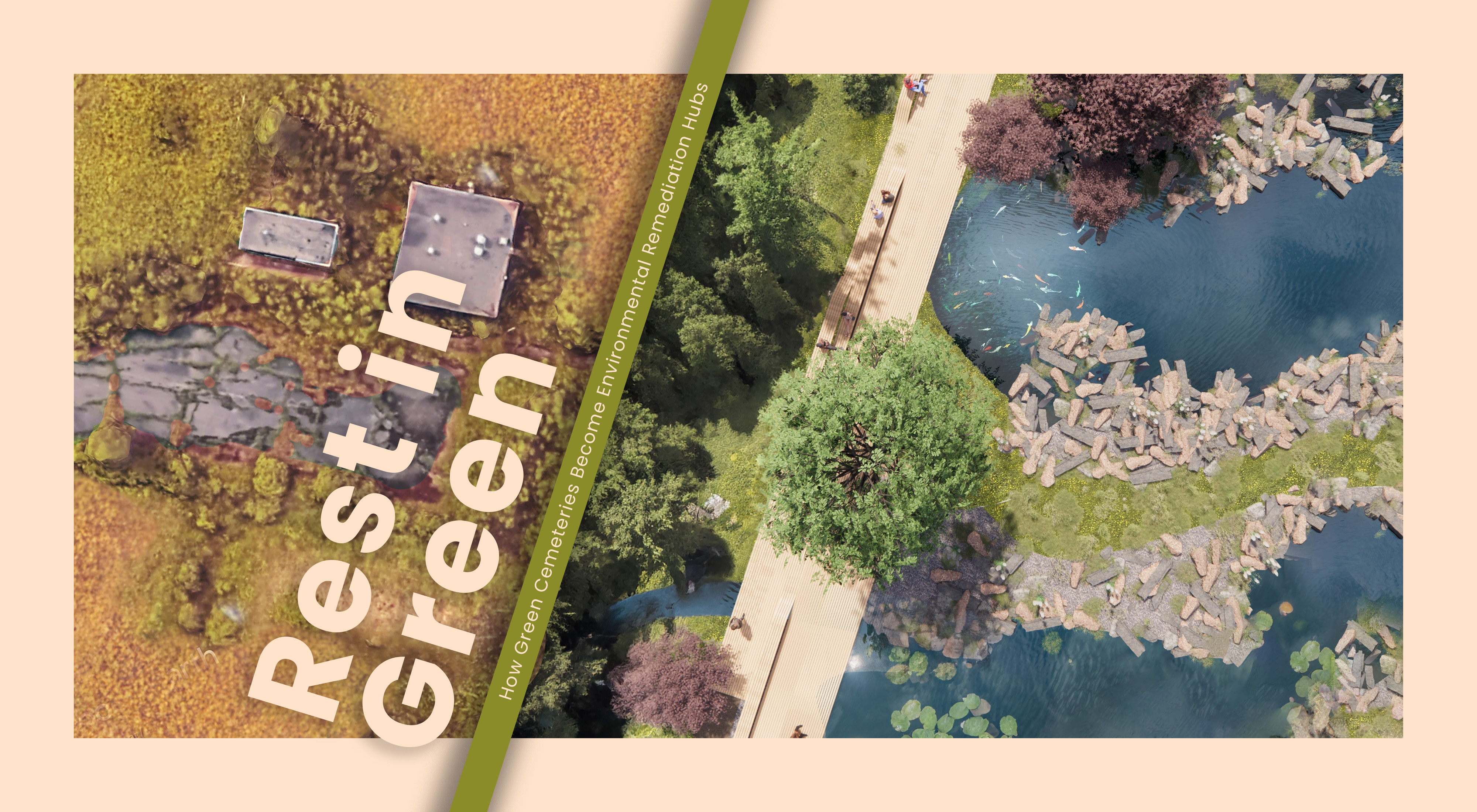Urban areas facing neglect and abandonment often do so because the suffer from environmental challenges that hamper their revitalization efforts. One of the most common situations we see is antiquated industrial uses that have gone out of business and left their polluted vacant facilities behind. These polluted properties are known as brownfields.
Traditionally, brownfields are cleaned up by excavating the polluted soil and transporting it great distances to landfills or processing facilities. The system is expensive and rather unsustainable. In recent years however, an innovative nature driven approach has emerged that harnesses the power of microorganisms, fungi, and plants to facilitate environmental remediation in these polluted urban regions.
Though the traditional model of real estate development typically will not wait for the lengthier processes of phytoremediation and bioremediation, we at Life After Life are implementing the technologies in a way that is symbiotic with a land use that humanity needs, in a new model of regenerative urban revitalization.
Life After Life’s environmentally conscious burial grounds offer not only a final resting place for the departed but also contribute to the rejuvenation of blighted urban spaces, providing a unique and sustainable approach to addressing local ecological issues.
Life After Life’s green cemeteries embody sustainable deathcare practices that reject the consumerism of traditional cemetery models. They emphasize the conservation of natural resources, carbon sequestration, preservation of biodiversity, and minimization of environmental hazard risks. These conservation cemetery parks, that we refer to as Living Memorials, incorporate eco-friendly features such as biodegradable caskets, digital grave markers, and native plantings, which collectively promote environmental sustainability within neglected urban areas.
One of the key environmental benefits of Life After Life’s green cemeteries lies in their ability to remediate contaminated soil. Neglected urban areas often bear the legacy of industrial pollution, which renders the soil unsuitable for healthy plant growth. Life After Life’s green cemeteries employ phytoremediation techniques by planting trees, shrubs, and native vegetation that possess the ability to absorb and filter pollutants from the soil in addition to prescriptive fungi and microorganisms with bioremediation capabilities. Over time, these plants and other organic additions help to purify the soil and restore its fertility, transforming the area into a thriving habitat.
Urban areas typically suffer from a loss of biodiversity, which further exacerbate hostile conditions. Life After Life’s conservation cemeteries can play a crucial role in conserving and enhancing local biodiversity by creating natural habitats for a wide range of plant and animal species. By incorporating native plants and fostering natural ecosystems, these burial grounds attract pollinators, birds, and other wildlife, thus reintroducing essential ecological interactions that may have been disrupted by municipal sprawl.
In addition to their environmental benefits, Life After Life’s green cemeteries positively impact public health and wellbeing in surrounding communities. They provide opportunities for education and awareness about sustainable burial practices, ecological restoration, and the importance of biodiversity. These burial grounds often can serve as green spaces within urban areas, offering tranquil, aesthetic environments for visitors, recreational activities, and community events. By engaging with local residents and organizations, green cemeteries foster a sense of community ownership and pride, contributing to the overall revitalization of neglected urban areas.
Life After Life’s Living Memorial Park creations breathe new life into underserved areas by transforming them into thriving public recreation spaces. These neglected spaces often suffer from soil degradation, contaminated groundwater, and diminished biodiversity due to decades of neglect and industrial activity. Our Living Memorials provide an opportunity to address these issues that the public sector either cannot or will not, by employing ecological restoration techniques and community driven support systems. Through sustainable land management practices, including pollution remediation and reforestation efforts, our burial grounds revitalize the local environment and foster ecological healing.
Life After Life stands as a much needed, culturally compatible solution to address environmental degradation in distressed neighborhoods of American cities. Through our sustainable burial practices, phytoremediation and bioremediation, habitat restoration efforts, and the conservation of biodiversity, these burial grounds transform abandoned spaces into thriving ecosystems. Moreover, they actively engage communities, offering education and recreational opportunities, and fostering a sense of pride and ownership. By embracing the power of green cemeteries, we can contribute to both environmental remediation and the revitalization of neglected urban areas, creating a more sustainable and vibrant future for generations to come.

